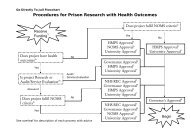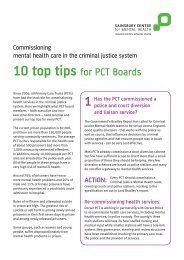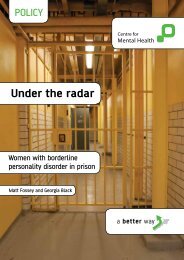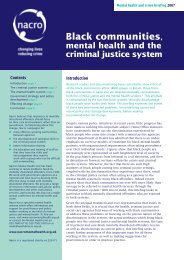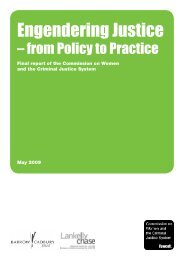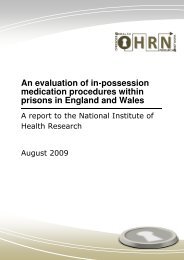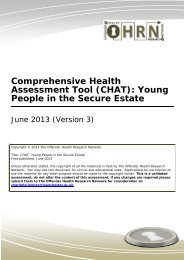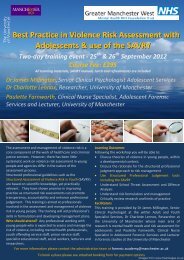Physical Control in Care Training Manual - Independent Advisory ...
Physical Control in Care Training Manual - Independent Advisory ...
Physical Control in Care Training Manual - Independent Advisory ...
Create successful ePaper yourself
Turn your PDF publications into a flip-book with our unique Google optimized e-Paper software.
PHYSICAL CONTROL IN CAREPHYSICAL CONTROL IN CARESECTION 1: FOREWORD1.0 INTRODUCTIONThe Secure Tra<strong>in</strong><strong>in</strong>g Centre Rules require that the methods ofphysical restra<strong>in</strong>t used <strong>in</strong> Secure Tra<strong>in</strong><strong>in</strong>g Centres (STCs) areapproved by the Secretary of State. The only method that has thisapproval is <strong>Physical</strong> <strong>Control</strong> <strong>in</strong> <strong>Care</strong> (PCC).The PCC curriculum has been developed by NOMS Tra<strong>in</strong>ers fromNational Tactical Response Group (NTRG) formally C&R NationalCentres, to specifically ensure the safe custody of young people <strong>in</strong>care and those authorised to keep them <strong>in</strong> a secure environment.The techniques are approved for use <strong>in</strong> all Secure Tra<strong>in</strong><strong>in</strong>g Centres <strong>in</strong>England and Wales and for approved Escort Providers.PCC is a system of holds designed to be used on young people. Theholds do not rely on pa<strong>in</strong> to rega<strong>in</strong> control but PCC does <strong>in</strong>clude twodistraction techniques that rely on the application of pa<strong>in</strong>. Thesetechniques are the rib distraction and thumb distraction.These distraction techniques may only be used <strong>in</strong> violent situationswhere the safety of young people, staff or others is at risk.This version of the PCC <strong>Manual</strong> has been developed as an <strong>in</strong>terimcurriculum pend<strong>in</strong>g the <strong>in</strong>troduction of a new holistic behaviourmanagement system known as Conflict Resolution Tra<strong>in</strong><strong>in</strong>g (CRT).Due to the chang<strong>in</strong>g demographics of young people with<strong>in</strong> STCs,PCC techniques may not be successful <strong>in</strong> manag<strong>in</strong>g conflict <strong>in</strong>volv<strong>in</strong>gviolence and risk to life or limb. This should be determ<strong>in</strong>ed by staffcarry<strong>in</strong>g out a dynamic risk assessment at the scene. Establishmentsshould have <strong>in</strong> place cont<strong>in</strong>gency plans to deal with any <strong>in</strong>cident thatfalls under this remit.© National Offender Management Service National Tactical Response GroupJuly 20106



